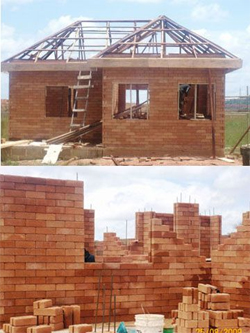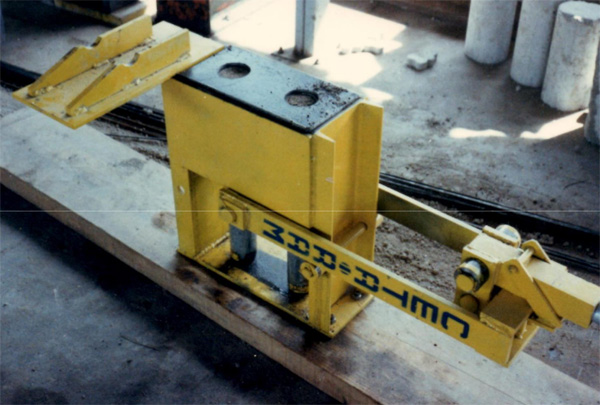Compressed Earth Blocks (CEBs), also called earth blocks or CSEBs is one of the most popular natural building methods in part because bricks are well accepted and understood by builders, and because the walls go up fairly quickly. Thin walls take up minimal space in urban areas where lots are small and expensive. Interlocking bricks add stability. And, of course, the main material is clay which is dirt cheap.
CEB
Habitech Earth Block Building

“Habitech Center is a research and development center for building components and building technology at the School of Engineering and Technology (SET) of Asian Institute of Technology, Pathumthani (AIT), Thailand.
Compressed Earth Block Wall Build – Dwell Earth
“Training for an old style of compressed earth block. Dwell Earth traveled to South Africa to train locals techniques in the production of compressed earth blocks using the Dynabloc LM 714 machine.
Mud Bricks or Pressed Earth Bricks?
There is much information about the generic term Mud bricks, but many people are not aware of the advanced technology and benefits of specifying Pressed Earth Bricks (CEBs) for your building project:
CETA Ram Block Press

“by Roberto Lou Ma, Civil Engineer, Centro de Experimentación enTecnología Apropiada, Guatemala
The CETA-RAM is a manually operated block press, developed by the author just after the February 1976 Guatemalan Earthquake, specifically for the production of hollow soil-cement building blocks. The hollow blocks are intended for use in reinforced masonry for low cost earthquake resistant housing.The CETA-RAM is a modified version of the well known CINVA-RAM.
Ecological home of Sanjay and Pratibha Singh
“The artist couple Pratibha and Sanjay Singh have a nice earth based ecological home along with a studio for Sanjay as part of the home. The whole house is of earth excavated from the site. There is no plastering or painting for the building. The house is naturally lit and naturally ventilated with no fan or air conditioning. Sanjay is an avid gardener and we josh about his North Indian garden. Harvested rain supplies the garden water and adds to the house hold use. Grey water from the kitchen is reused for the garden.
